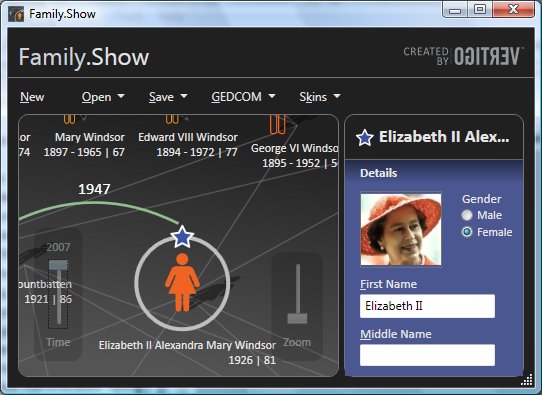I’ve been looking for a new Smartphone for a while, and decided to try the Samsung i600, a Windows Mobile device with strong connectivity (GPRS,Bluetooth,UMTS,HSDPA,wi-fi) and a tiny QWERTY keyboard. It is not a touch screen, which to me is a good thing in a mobile phone. I’ve not tried the finger-driven iPhone yet, but I did use a Palm Treo for a while and found the stylus a nuisance. For me, email and web access are just as important as voice, and I’ve already found the keyboard useful. You can find the specs of the i600 elsewhere; but here are my observations so far.
Pros
I like the feel of the device. The central button and joystick is a pleasure to use, and the backlit keyboard is pretty good considering its size. The 320 x 240 screen is excellent (dust aside, see below), and browsing the web is a realistic proposition provided that you are not paying something ludicrous like £4.00 per MB (yes, that’s what some operators charge in the UK). I’ve not tried all the features yet, but I’ve had success with IMAP email, wi-fi, Bluetooth, and playing MP3 music.
The i600 has a neat “card wheel” UI on its home screen, which provides quick access to most of the features. Using the joystick or scroll wheel, you first find the card you want, and then scroll within the card to find what you want. For example, the Profile card lets you select a profile such as Normal, Silent, or Vibrate. The Now Playing card is particularly good, letting you pause, play and skip songs without leaving the home screen.
The camera is decent for a mobile, but still nowhere near good enough to replace a separate camera even for my limited use. You can also capture a jerky little video. There are actually two cameras, one on the back for taking pictures, and one on the front for video calls.
Others have found battery life a problem, but Samsung has solved it by bundling an extended battery and external charger in the box. Fitting the extended battery makes the phone a little thicker, but not excessively so. You also get a standard battery, which you can use as an emergency backup. I’ve found this more than sufficient. Apparently not all bundles include the extra battery, so it’s worth checking this point if you are considering the phone.
This is also a good device for developers, provided you are happy with Visual Studio. I was up and running quickly once I’d worked out the security issue (separate post coming soon). I did purchase an unlocked device, as I hate the whole contract circus. A Micro SD storage card is also essential.
Cons
Windows Mobile is still not as easy as it should be. I really think Microsoft should have ActiveSync sorted by now, but apparently not. When I first connected to my Vista desktop PC, Windows Installer started up, thrashed around for a bit, then declared it was quitting because a newer version was installed. After that, nothing. I connected the device with USB, there was no error, but the Mobile Device Center could not see the phone. I fixed this by downloading Mobile Device Center 6.1. That mostly works, but I still have strange problems syncing with Exchange. This works through wi-fi provided I set the connection to “work” rather than “internet”, but not through USB. Perhaps I’ll work out why, but this sort of thing is frustrating and difficult, and online help is a masterpiece of polite unhelpfulness. Try a search for “cannot connect with current connection” (with the quotes) if you really want to know more.
More generally, I find navigation with Windows Mobile unpredictable at times. Example: I click Start, then Organizer, then Calendar. This fires up the Calendar, which defaults to the monthly view. I select a day, and click OK to view an appointment. Then I click the Back button. I should be back at the monthly view, but I’m not: I’ve exited Calendar and I’m back on the Organizer group in the Start menu.
I find the email client similarly confusing. No matter how hard I try, I seem to end up switching out of the app completely when I don’t mean to.
A crazy omission in Windows Mobile for Smartphone is cut, copy and paste. I couldn’t believe this at first, on a device with a keyboard, but it is true. I believe there are third-party solutions. I’ve also installed the trial of Documents To Go, which does support the clipboard, though this won’t fix Mobile Outlook.
No Flash support in Pocket IE.
I have a few complaints about the i600 itself. No socket for a standard headphone jack, so you have to use the supplied ear buds. Dangly plastic covers for the data cable and Micro SD ports, which are bound to break off in time. No support for Micro SDHC, which means a 2GB limit on the storage card. I’ve also applied the official Windows Mobile 6.0 upgrade (pretending to be from the Netherlands) and was disappointed to find no Mobile Office – having said which, Documents To Go is probably better in any case.
Most seriously, I can already see dust behind the screen. It’s not yet a big problem, but how much worse will it get in prolonged use? There appears to be no fix other than returning the unit for service or replacement.
Overall
Despite the cons, this is easily the best mobile I’ve used.
Technorati tags: windows mobile, microsoft, samsung i600, activesync, mobile phone
